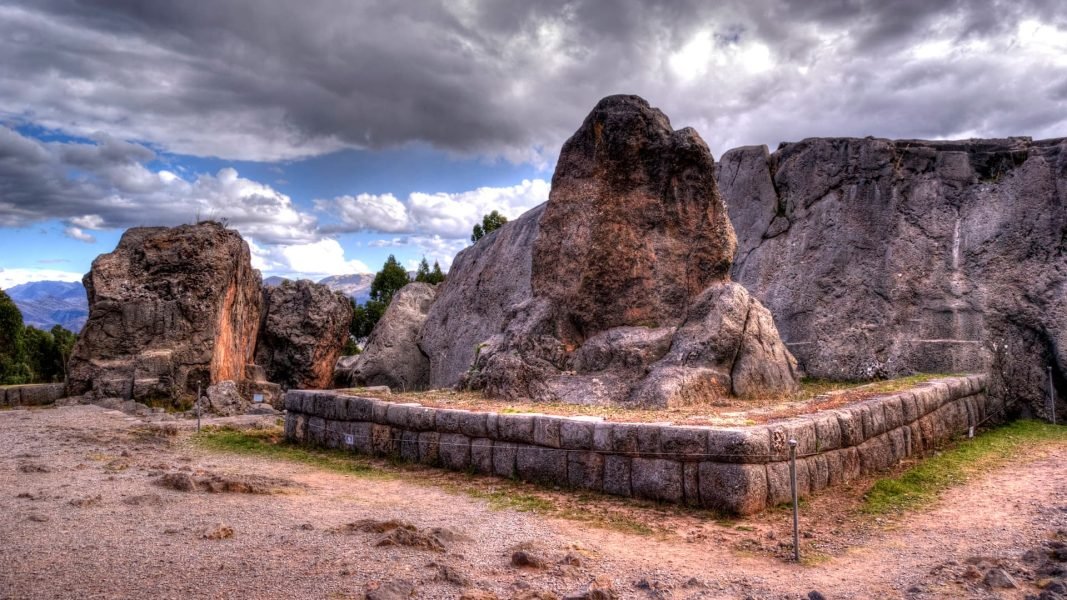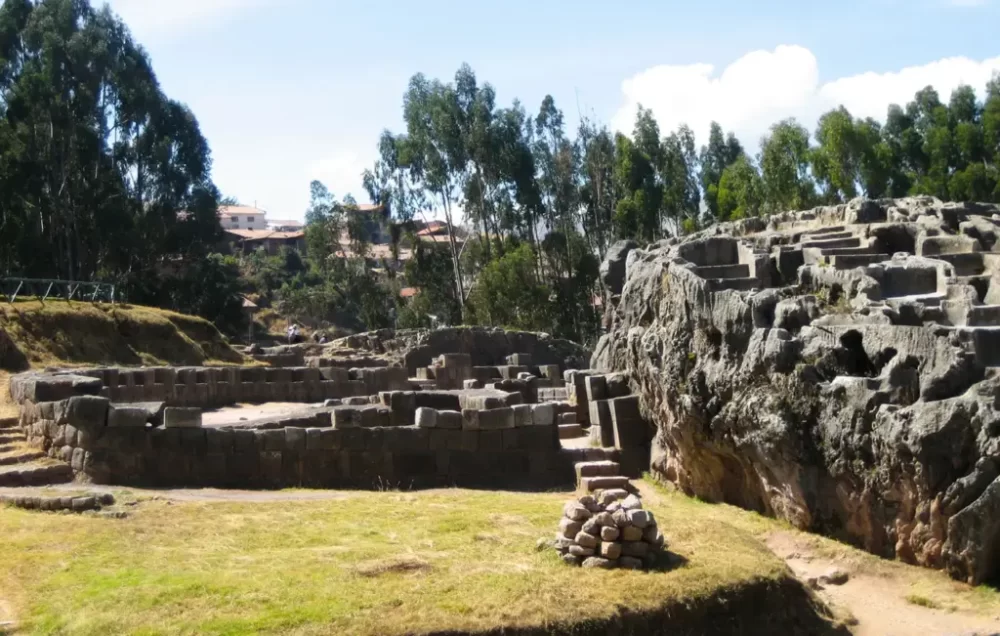Qenqo Arequeologic Complex | Cusco
Qenqo is an archaeological site located on the outskirts of the city of Cusco, Peru. It is located about 6 kilometers northeast of Cusco city center, in the Andean region of the country. Qenqo is part of a group of archaeological sites that also includes Sacsayhuaman, Puca Pucara and Tambomachay, all close to each other and that were part of the ceremonial system of the ancient capital of the Inca Empire.
“Qenqo” is a term that comes from the Quechua language, spoken by the indigenous peoples of the Andes in South America. In Quechua, “qenqo” (also written as “q’enqo” or “kenko”) means “labyrinth” or “zigzagging labyrinth”. This name probably refers to the characteristics of the archaeological site, which includes carved rock structures and labyrinthine passages. Qenqo was an important ceremonial center during the Inca Empire and contains several ceremonial and ritual structures, including canals, altars and rock carvings that are believed to have had religious and astronomical meanings for the Incas.
The altitude of Qenqo, the archaeological site located on the outskirts of the city of Cusco, Peru, varies approximately between 3,600 and 3,700 meters above sea level. As part of the Andean region, the altitude may vary slightly depending on the exact location within the archaeological complex.
History of Qenqo
Qenqo is an archaeological site located on the outskirts of the city of Cusco, Peru. Its history dates back to pre-Inca times, but it reached its greatest importance during the period of the Inca Empire. Here is a summary of its history:
- Pre-Inca Period: Qenqo was occupied by pre-Inca populations, such as the inhabitants of the Killke Culture, who inhabited the region before the arrival of the Incas. During this period, some early structures were built at the site, although their exact function is not fully understood.
- Inca Period (15th and 16th centuries): During the height of the Inca Empire, Qenqo acquired great importance as a ceremonial and religious center. It is believed that the Qenqo complex was used for religious ceremonies and rituals related to the worship of the Inca gods, as well as for astronomical observation and the practice of medicine.
- Colonial Influence: After the Spanish conquest of the Inca Empire in the 16th century, Qenqo lost its importance as a ceremonial center. The Spanish imposed their dominion over the region and many of the Inca structures were destroyed or modified to adapt to European beliefs and religious practices.
- Modern Period: In the following centuries, Qenqo was abandoned and forgotten for some time. However, as interest in archaeology and cultural heritage preservation grew in the 20th century, Qenqo was rediscovered and efforts to conserve and study the site began.
Today, Qenqo is a major tourist destination in the Cusco region, where visitors can explore the Inca ruins and learn about their history and cultural significance. Structures at the site, such as the rock-cut labyrinths and ceremonial altars, are impressive testimonies to the engineering and religiosity of the ancient Inca civilization.

How to get to Qenqo Arequeologic Complex | Cusco?
To get to Qenqo from the city of Cusco, Peru, you can follow these options:
- By car: If you have access to a car or are using a rental service, you can drive from the center of Cusco to Qenqo. The distance is short, approximately 5-6 kilometers, and the trip should take about 15-20 minutes, depending on traffic.
- By cab or private transport service: You can take a cab from the center of Cusco to Qenqo. Local cab drivers are usually familiar with the nearby archaeological sites and can take you directly to your destination. Be sure to agree on the fare with the cab driver before you leave.
- By public transport: If you prefer to use public transport, you can take a bus or a combi (collective transport vehicle) from the center of Cusco to the Sacsayhuaman direction. Once in the Sacsayhuaman area, you can walk to Qenqo, as it is a relatively short distance away.
- By sightseeing tour: Many travel agencies in Cusco offer sightseeing tours that include visits to various archaeological sites, including Qenqo. You can search for local tours that suit your interests and book one that includes a visit to this site.
Regardless of the mode of transportation you choose, be sure to check Qenqo’s hours of operation and entrance fees before your visit. Also, keep in mind that the altitude in Cusco is considerably high, so you may need to acclimatize if you are not used to the altitude before engaging in any intense physical activity.

Recommendations for visiting Qenqo
Here are some recommendations to make your visit to Qenqo more enjoyable and enriching:
- Bring water and sun protection: Cusco’s altitude can cause dehydration faster, so be sure to bring enough water. Also, the sun can be strong in the region, so wear sunscreen and a hat to protect yourself.
- Wear comfortable shoes: The terrain in Qenqo can be uneven, with steps and stone paths. Therefore, it is advisable to wear comfortable shoes suitable for walking, such as sneakers or hiking boots.
- Explore at your leisure: Qenqo is a fascinating archaeological site with many structures to explore. Take your time to walk around the site, observe the details carved into the rock and enjoy the surroundings.
- Take a guided tour: Consider taking a guided tour of the archaeological site. Local guides can provide valuable information about the history, architecture and cultural significance of Qenqo, which will enrich your experience.
- Respect the site: Remember to be respectful of the archaeological site and follow the indications of the staff. Do not climb on the structures, do not leave trash and do not damage artifacts or ancient structures.
- Learn about the history: Before your visit, you can do some research on the history and culture of Qenqo to have a better understanding of the site and appreciate the experience more.
- Enjoy the scenery: In addition to exploring the archaeological structures, take a moment to enjoy the surrounding landscape. Qenqo offers breathtaking views of the Andes Mountains and nearby valleys.
By following these recommendations, you will be able to make the most of your visit to Qenqo and enjoy a memorable experience exploring this unique archaeological site in the Cusco region of Peru.












